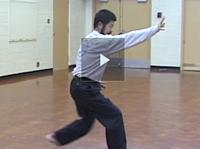Helen Yum
Communications
Insight
University of Regina
Volume 19, Number 1, January 1988
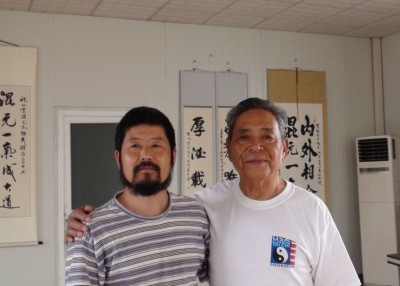
Chen Zhonghua with Grandmaster Feng Zhiqiang
Joseph Chen is glad his last name isn’t Smith or Jones.
If it had, the U of R student would never have been accepted for study by his venerable tai chi master a few years ago.
That’s because ‘Chen’ was the surname of the man credited by modern historians with developing tai chi chuan, or Chinese shadow boxing.
Chen was studying at Shandong University in China when he heard of the amazing ability of an elderly tai chi master. With ten years training in kung fu, Chen was curious and skeptical, and he watched the master practicing in the park for days. He was impressed and so persistent that the master eventually agreed to teach him.
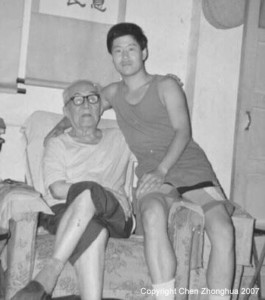
Chen Zhonghua with Grandmaster Hong Junsheng
“My name helped,” the 26-year old says modestly. Today, Chen is Regina’s only teacher of the style of tai chi credited to his forefather, and one of the few in Canada.
Legend holds that the traditional martial art originated in China’s Wu Dang Mountains when one night, the slow, intricate movements were revealed to a monk by the Yellow Emperor in a dream. But records trace tai chi to Chen Wangting, the founder of the Chen family. In the 17th century, he developed the art and practiced it secretly in the family compound in Henan province.
The fighting style was so powerful, it was practiced at night and used only against intruders. But the secrecy was lost when a martial arts practitioner, Yang Lu Chan, disguised as a deaf-mute servant, entered the compound. He spread the knowledge of tai chi through his own teachings; his modified version, called the Yang-style, and the Chen-style are the most popular of the five schools that developed.
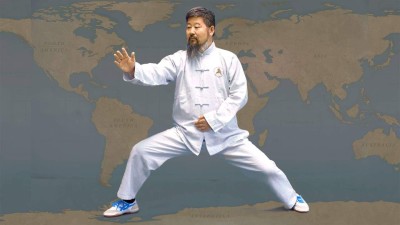
Chen Zhonghua Zhuanyong-Chen Zhonghua Block Touching Coat
Chen is quick to say he’s not descendant of that particular branch of famed Chens. But a Chen is a Chen, much as a Wong is a Wong, and though a distant relative, he has an impressive command of the ‘family’ tai chi lore.
Although it was used for defense, tai chi evolved into more of an exercise after the introduction of guns and other weapons to China. There are 108 forms in the series of movements, which resemble fighting with one’s shadow. The basic motion is circular.
“Tai chi is the principle of wholeness,” says Joseph Chen, “The movement, like water, never stops, but some sections of the river are fast, some are slow.”
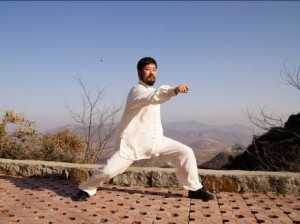
Chen Zhonghua Zhuanyong-Punch Cover Hand
The motions, long and flowing, soft and hard, match Chinese thinking on health and well-being. “The principles of tai chi are tied in with another traditional exercise for, Qi Gong, or proper breathing,” Chen explains.
Tai chi holds that good health depends on the proper circulation of chi – internal energy – through the body. Illness results from blocked chi, manifest as pain or disorder. The stretching and turning motions of tai chi help release points of tension in the body, promoting the flow of this energy. The theory also holds that energy originates from a point in the abdomen called the Dantian center.
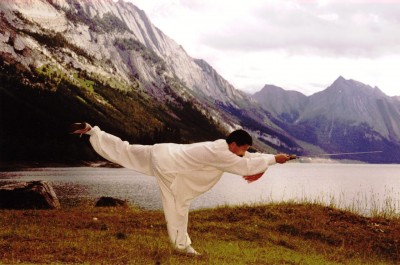
Chen Zhonghua Zhuanyong-Sword Poke Horizontally
But what does this have to do with breathing?
According to Chen, tai chi is very much an internal exercise. Consistent practice teaches you to breathe properly, that is, from the abdomen. By breathing in this most natural way, you are actually massaging your internal organs, tai chi experts say. As well, using the diaphragm and abdominal muscles in breathing improves blood circulation, and so improves digestion and even relieves constipation in older people.
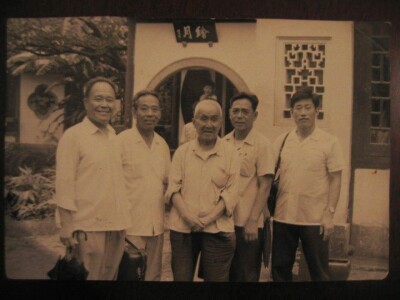
Yang Zhenduo, Wang Peisheng, Hong Junsheng, Feng Zhiqiang and Chen Xiaowang
Most people in North America are what respiratory specialists call shallow chest-breathers – they need to become aware of their diaphragm and learn to use it in breathing. Breathing from the abdomen, as children do, is more natural, less forced. Or as Chen recites in a Chinese proverb: “When you are born, you breathe with your stomach, when you grow up, you breathe with your chest, when you are about to die, you breathe with your throat.”
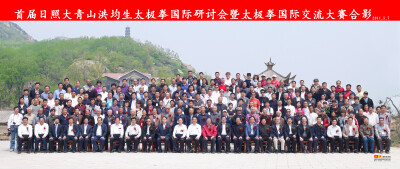
First Daqingshan International Taiji Competition Groupo Photo
Chen, who is studying part-time towards his master’s degree in education at the U of R, specifically in curriculum development, points out that in China, each hospital uses tai chi in rehabilitation programs as a matter of official policy.
Tai chi devotees say the exercise can help Canadians who suffer from a variety of ailments such as arthritis, rheumatism, chronic back pain, and even cancer. (“The mind controls your breathing patter,” says Chen, “so theoretically, your mind could cure almost any health problem.”) Tai chi literature abounds with accounts of those who have cured themselves of a host of physical and mental ailments.
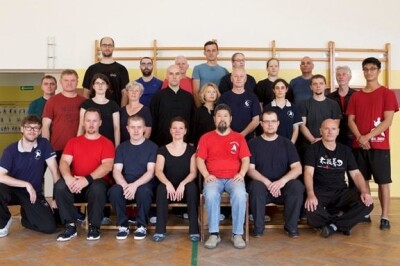
Prague Practical Method Workshop 2017
Western medicine cannot yet explain how tai chi works, but the benefits — and advantages — of tai chi are real. It is easily practiced alone, once you’ve mastered the forms, each with an exotic name like The White Crane Spreads Its Wings.
As well, tai chi can have a calming effect when a person is tense or worried. Because the movements are continuous and demand full concentration, all other thoughts are pushed aside.
Chen teaches Chen-style tai chi when he is not studying or teaching English part-time at a Regina elementary school. In summer, his class meets in a park, but colder weather pushes them indoors to a school gymnasium. Those in the class come for many reasons — to train for martial arts, to stay fit, and for philosophical reasons.
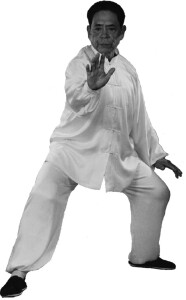
Grandmaster Feng Zhiqiang
Tai chi has grown in popularity in Canada in recent years as more and more people understand how beneficial the traditional Chinese exercise can be, Chen says.
And the outstanding tai chi master Cheng Man Ching, who died in 1975, puts it another way.
“If there are other methods of physical exercise which can equally benefit human beings, I am silent. I do not know of any.”
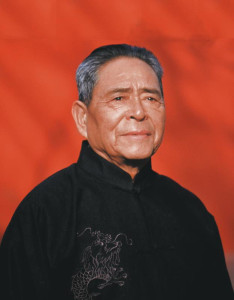
Grandmaster Feng Zhiqiang
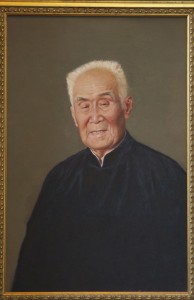
Grandmaster Hong Junsheng Portrait


